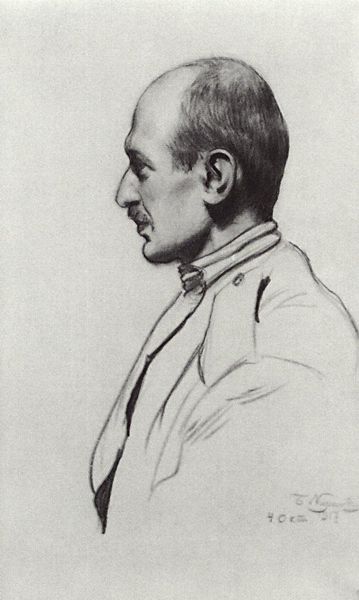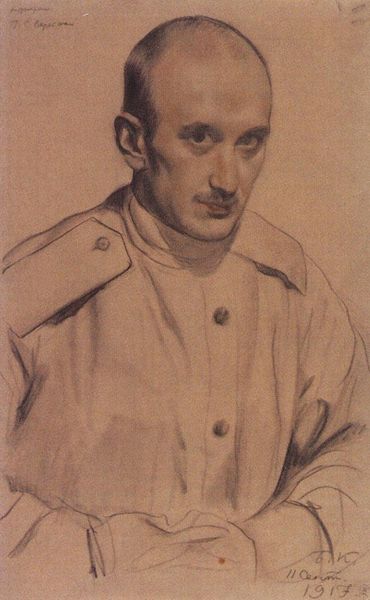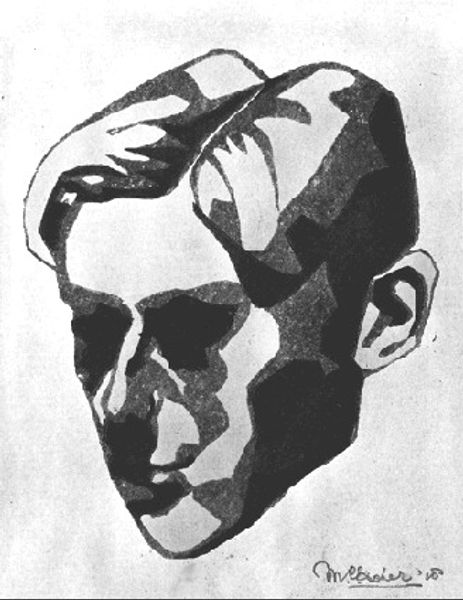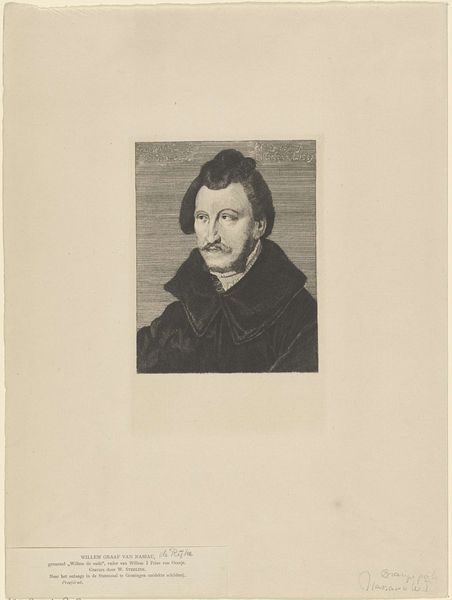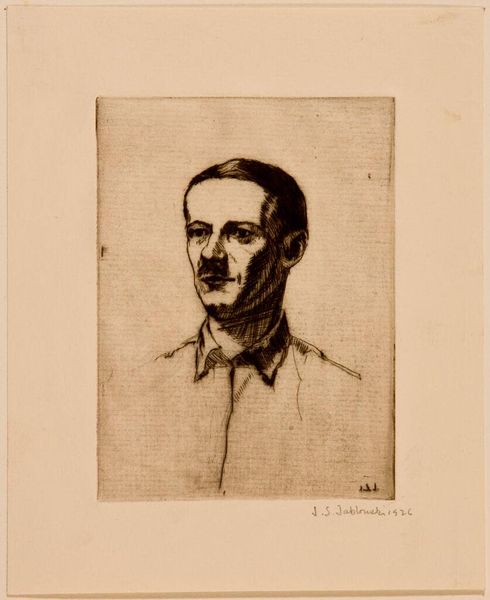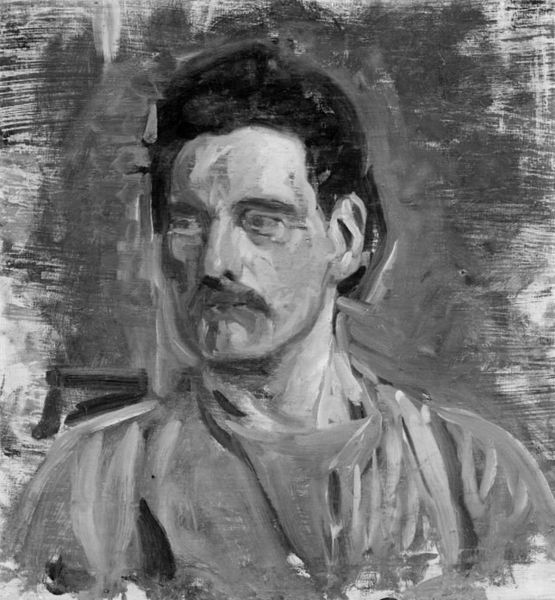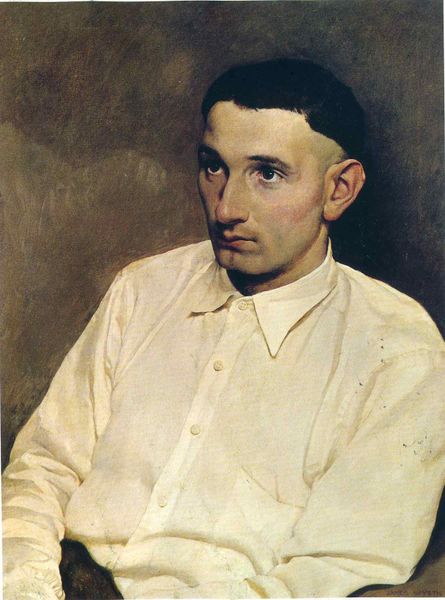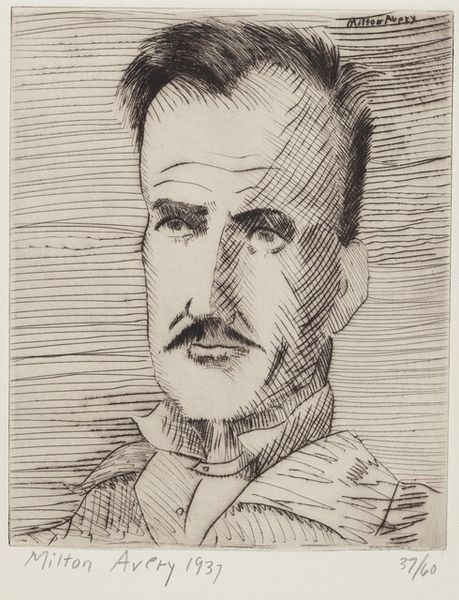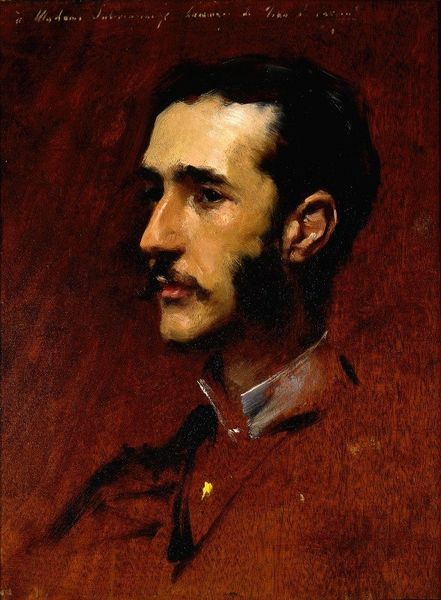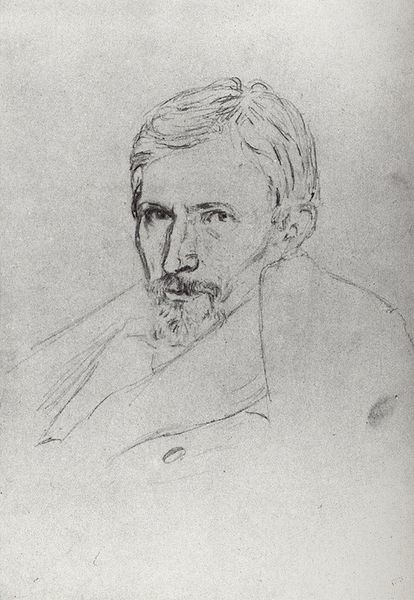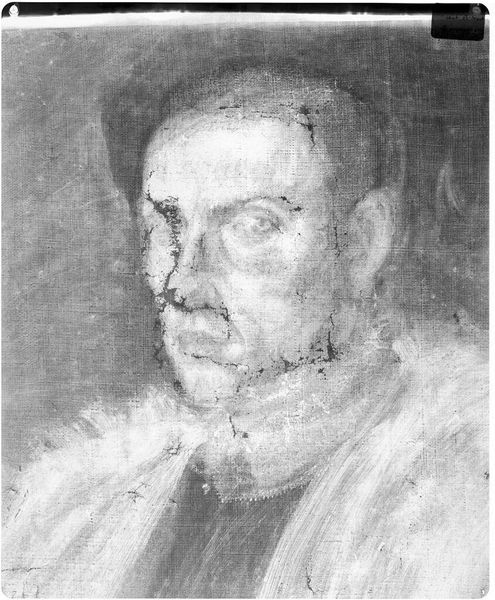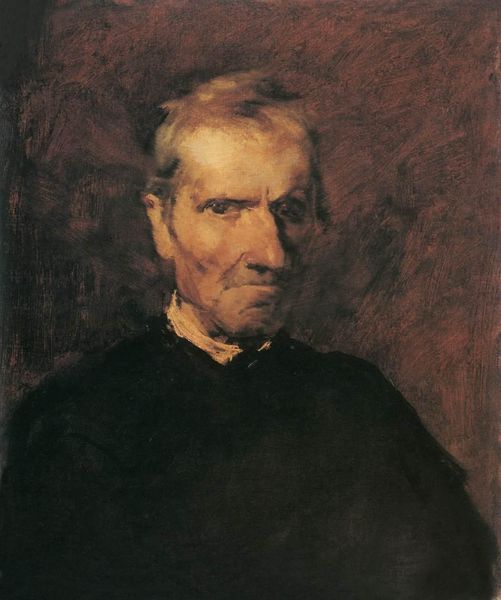
drawing
#
portrait
#
drawing
#
self-portrait
#
portrait
#
expressionism
#
monochrome
Dimensions: 58.3 x 43 cm
Copyright: Public domain
Editor: Edvard Munch's 1896 drawing, "Self-Portrait I," now at MoMA, really strikes me with its starkness. It's monochrome and quite imposing, almost confrontational. What's your take? What should viewers consider when looking at this? Curator: Well, first it's essential to understand the socio-cultural context. In the late 19th century, particularly among avant-garde circles, there was increasing emphasis on the individual, psychology, and emotional expression. How does that historical emphasis play into Munch's self representation, in your opinion? Editor: I guess, looking at it now, I can see he's presenting himself in quite a raw, honest way – perhaps not how society typically expected artists to be seen. I see the bareness of it as a political and a personal statement. Curator: Precisely. The darkness enveloping him and the somewhat skeletal form beneath suggest the artist grappling with his own mortality, or even society's perceived morbid state. Expressionism as a movement engaged heavily with anxieties stemming from industrialization and social alienation. Do you think Munch is merely capturing personal feeling or attempting to reflect his time? Editor: I think both. His own vulnerabilities became a kind of mirror for collective anxiety. Curator: Right, and the choice of monochrome drawing is significant; accessible mediums like drawing helped to circulate challenging views to wider audiences beyond the traditional patronage system, democratizing exposure to modernism, so it is worth thinking about who was exposed and who had limited access, especially relative to art that came before. This wasn't simply about portraying personal suffering; it was about sparking conversation. Editor: I see it more clearly now, the personal, political, and the expression as a type of activism! Curator: Indeed. Art has often been used to create an appeal to shared values, to build trust. When that trust is questioned, one turns to their inner state. This makes the politics of art less about shared societal value, and more about authentic vulnerability as Munch shows here. Thanks for pointing that out to me!
Comments
No comments
Be the first to comment and join the conversation on the ultimate creative platform.

